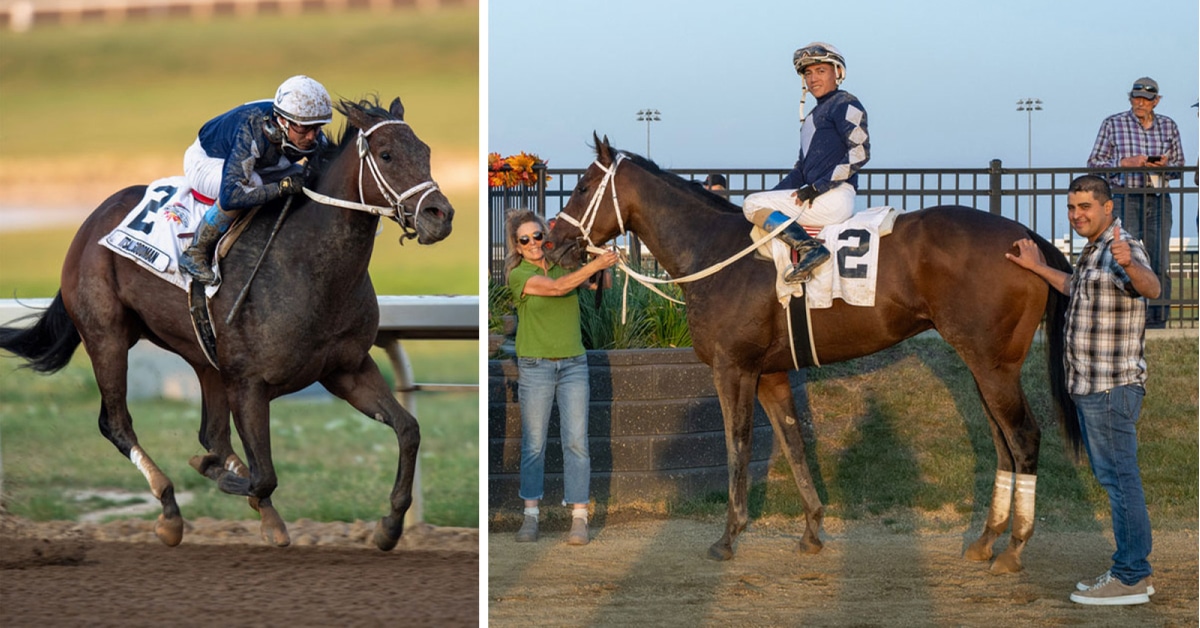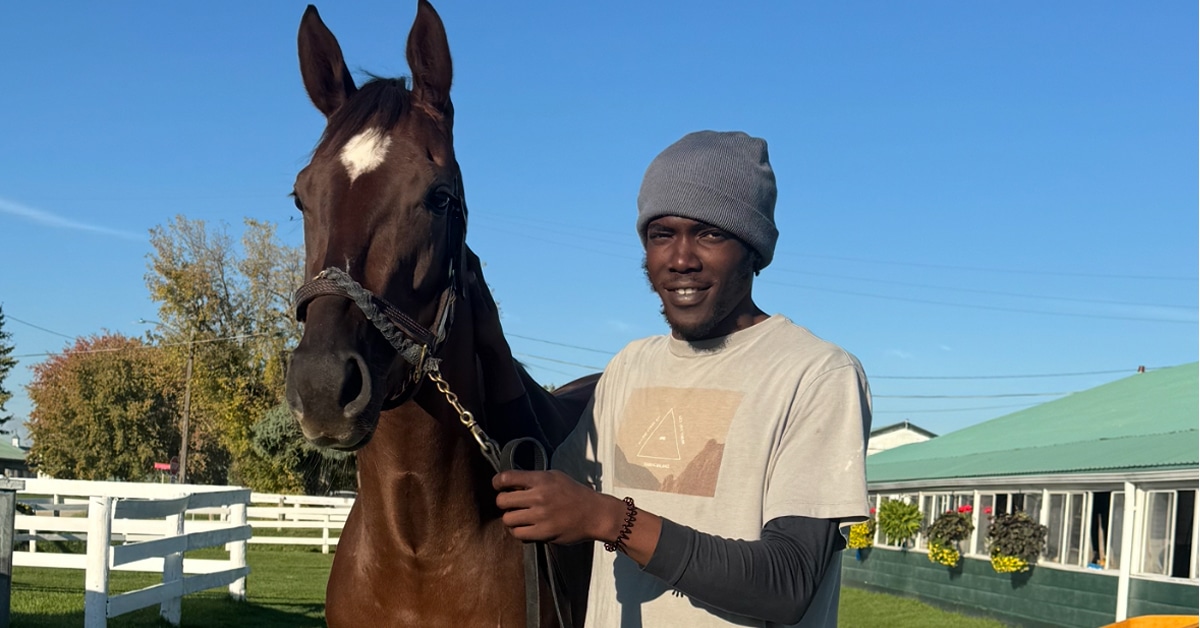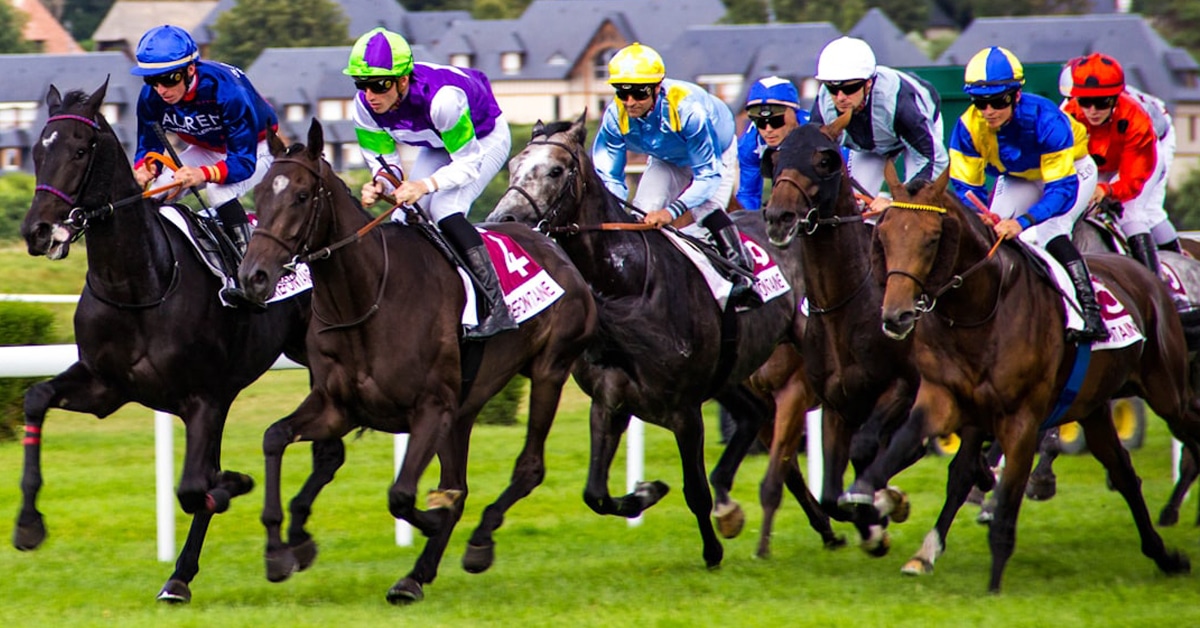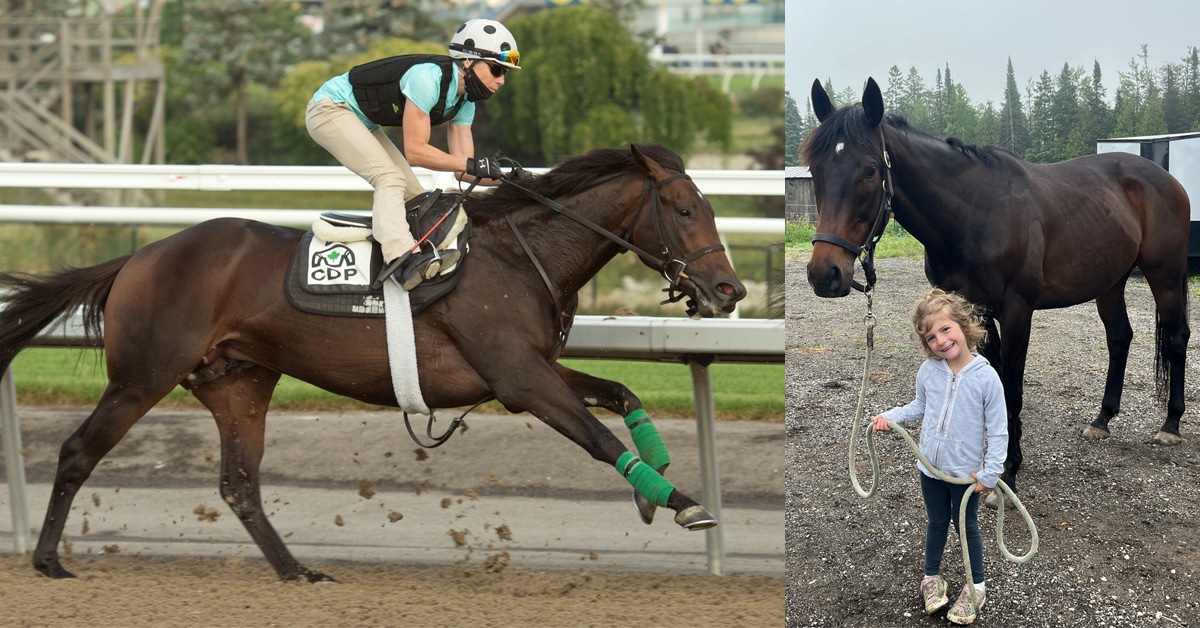Each breeding season, a new stallion is introduced to a mare at farms all over Canada. Several of this country’s top stallion people discuss the numerous factors that go into picking out a stallion and getting him ready for his new career.
Marketplace and mares
The first few seasons at stud for a new stallion can make or break a new career. The key to getting a stud off to a fast start with lots of runners and some winners is finding the right stallion for a particular racing jurisdiction and the auction marketplace.
For instance, you may not be inclined to retire a top-class grass horse or a horse with European-type breeding in western Canada since there is no turf racing in the western provinces.
“You have to understand your market where you plan standing the stallion,” says Dermot Carty, a stallion and sales manager for Adena Springs North in Aurora, ON. “You need to know there is going to be a good bank of mares that you can rely on. You will also have to support your own stallion as well.”
Carty has placed more than 40 stallions at stud over the years and has been instrumental in forming one of the most powerful stallion stations in Canada that includes Silent Name (Jpn) being a leader in Canada after stints in Kentucky and New York, and making Wilko and Olmodavor good fits in Alberta and Manitoba, respectively.
“It’s a big gamble,” notes Carty. “You need a lot of money and that is one factor that will dictate what kind of mares he will get. Canadians are very astute people when it comes to breeding, considering how small the mare numbers are. The number of top-class runners that have come out of Canada is unbelievable.”
Carty also emphasized the importance of a stallion farm that has had experience with new stallions: from the transition off the racetrack to stud life and to marketing and planning his career.
“Look for a farm that can follow through with the work needed to make it a good transition for the stallion. It’s important to know and trust the people that will be dealing with the horse on a daily basis.”
At Colebrook Farms, owner John Brnjas has formed one of the strongest stallion groups in the country. He brought in 2004 Queen’s Plate winner Niigon to quickly be among the leading sires in the country before he was fatally injured in a stall accident. This spring, Brnjas has eight stallions, including champion two-year-old Leonnatus Anteas, one of the leading first crop sires of 2013, Badge of Silver, already a successful sire from Kentucky, and newcomer Nonios, a graded stakes winning son of Pleasantly Perfect.
“You have to be able to make a commitment to your stallion,” says Brnjas. “If you don’t have a base of mares for him right away, the numbers of foals start to shrink.”
Brnjas has collected a sizable broodmare band that helped propel his sires with large foal crops (thus more starters). Older or barren mares in the band can be used for test breedings before the stallion begins his new career.
On the track, in the genes
Brnjas did a lot of homework when it came to bringing Nonios (Greek for ‘quick as light’) to Ontario for 2014. The colt was based in California with trainer Jerry Hollendorfer and was one of the top three-year-olds of 2012. The colt won the Affirmed Handicap (GIII) at Hollywood Park and was only a head away from beating top older horse Game on Dude in the Awesome Again Stakes (GI).
“I studied his racing record to the point that I realized he [did not race a lot] against his own age group,’ says Brnjas. ‘He looked like a two-turn horse, he’s out of a Touch Gold mare and proved he had speed and can run a distance.”
Carty also does some investigative work on stallion prospects as far as the racing record.
“I prefer them to have shown ability as a two-year-old, whether it was working or racing. You can get this information from the horse’s trainer. A horse that raced a few times at two and then went on to do well at three is the ideal kind. I stay away from horses that did not get better until they were five or six-years-old. The marketplace simply won’t wait that long [for the foals to develop as runners].”
There can be exceptions, such as Giant Gizmo, the leading freshman sire in Canada of 2013. “I loved his female pedigree with [Grade I winning mare] Riboletta in there and I knew what I was getting: physically he is a big, powerful horse. But he did not run as a two-year-old as he had niggling shin problems. I spoke to trainer Brian Lynch and he said he was a very quick horse.”
“The most successful stallions usually come from the most successful bloodlines, in particular lines that have shown a propensity to produce a top sire,” continues Carty. “I like to look for other stallions in the female family of a prospective stud. Sligo Bay (Ire) has Glorious Song close up in his breeding [his dam is a full sister to Glorious Song] and that breeding produced stallions such as Saint Ballado, Devil’s Bag and Singspiel.”
Outside and inside
“Physically, you want your stallion to be masculine,” says Carty. “Simply, he needs to be very well put together with no major conformation flaws, good bone, a big hind end and intelligent head.”
One of Adena’s newest stallions for 2014, Hunters Bay, was a champion in Canada and will stand his first season at stud in Maryland at Heritage Stallions.
“He is an unbelievable specimen,” raves Carty. “He had a few minor problems [during his racing career] and was given a lot of time by his trainer Reade Baker and they were not serious.”
Brnjas had a representative look at Nonios before he purchased him and said it was important that he was getting the physical type of horse that breeders want.
“He has to be correct with a big shoulder, big butt. This is what people are looking for.”
The prospective stallion’s hind end also comes under scrutiny since he will be spending the next 10-plus years breeding mares. “I can deal with a tendon issue but not weak hocks or a weak hind end,” says Carty.
As for veterinary work, Carty will have the stallion scoped to make sure the horse’s airway has no flaws and a blood panel is pulled.
“We check the levels of estrogen and testosterone,” notes Carty. “Essentially, we are looking for a stallion with a good libido. About 10 per cent of all stallions are infertile.”
Carty will not do a sperm count test on the horse until the stallion is insured and test bred.
In the shed
Cal Britton, former stallion manager at Alberta’s Horizon Farm and now manager at Highfield Stock Farm, says introducing an off-the-track stallion to breeding is something that cannot be rushed.
“You have to be patient with a stallion who has not bred before,” offers Britton.
“You don’t want to discipline a young horse too much the first few covers. These horses have been taught not to pay attention to mares during their racing careers and now you want them to be a breeding stallion. So, you have to be patient and not expect the first few covers to be “textbook”.”
One of the stallions that Britton brought to Horizon off the track was Devonwood, a graded stakes-placed son of Woodman. Devonood had to be confined to a stall for the first few months after his purchase before he could be test-bred.
“Depending on the horse’s mental attitude, I would breed the horse every day for the first three or four days or until you had the horse covering consistently,” says Britton. “Turn-out time is important. I would want the stallion out for as many hours during the day as the weather will permit.”
Britton emphasized keeping the breeding process simple. “Too many people can make it confusing, almost intimidating for the horse. We never ever had more than three people involved in the “cover.” The most important person in the breeding shed is the person holding the mare. Make sure you have an experienced person on the “head end.”
At Adena Springs in Maryland, chief vet Dr. Brooke Bowman will be transitioning Hunters Bay to his new career.
“We don’t approach it as a complicated process,” says Dr. Bowman. “We actually hardly do anything from a vet standpoint. We try to be very calm about the process to start and we don’t use tranquilizers. Test-breeding them with a mare who is in heat and will put up with anything is important.”
Dr. Bowman said there can be occasional behavioural problems where the stallion won’t breed, or he will breed once and not the next day, but that is rare.
Taking a stallion off the track and into the breeding shed is a multi-layer process that begins with background checks.
“Anyone can stand a stallion, but being successful at standing a stallion is a different thing,” says Carty. “Look for bloodlines that are proven, don’t try and re-write the book. There are reasons why the great sire lines are great, they work.”
The Latest










